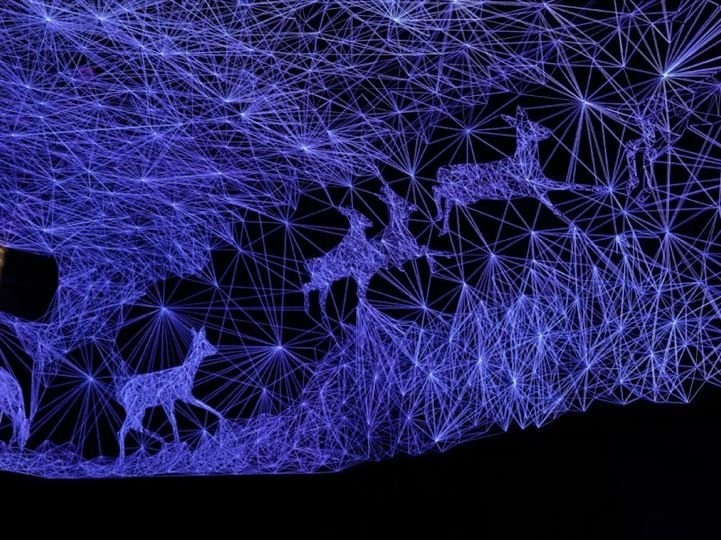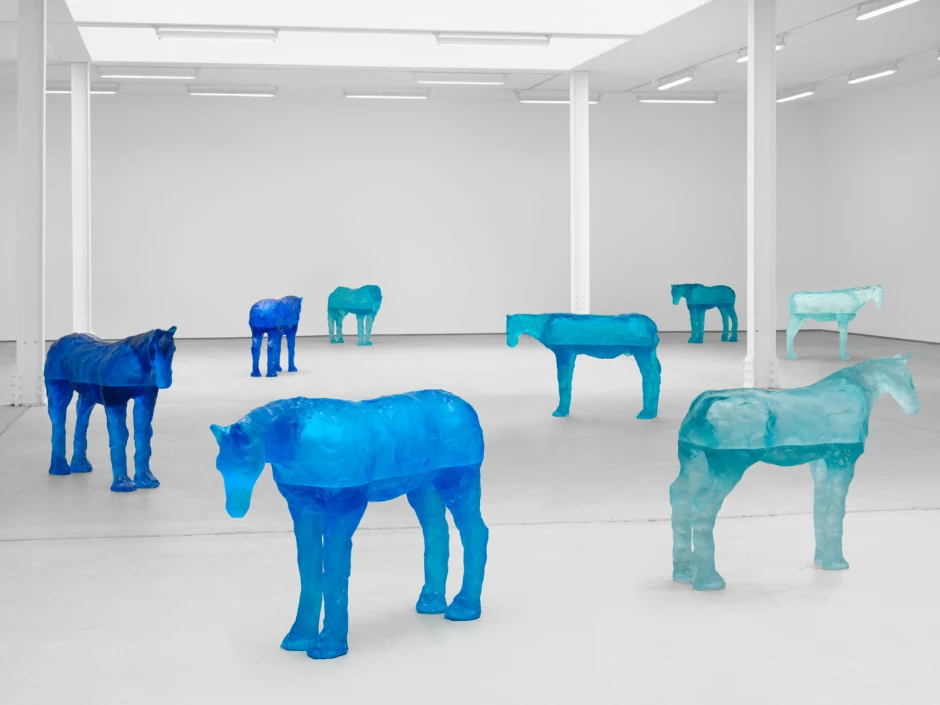painting
The Beauty and Mystery of Prehistoric Cave Art Inspires Contemporary Artists
Reviving the Legacy of Prehistoric Art: Contemporary Artists Pay Homage to Ancient Traditions
Cave paintings have fascinated and captivated people for centuries. They provide a glimpse into the world of our ancient ancestors and their daily lives, beliefs, and practices. Here are some interesting facts about cave paintings that showcase their beauty and the innovative techniques used to create them.
Reviving the Legacy of Prehistoric Art: Contemporary Artists Pay Homage to Ancient Traditions
Cave paintings have fascinated and captivated people for centuries. They provide a glimpse into the world of our ancient ancestors and their daily lives, beliefs, and practices. Here are some interesting facts about cave paintings that showcase their beauty and the innovative techniques used to create them.
One of the oldest known cave paintings was found in El Castillo cave in northern Spain, estimated to be over 40,000 years old. These paintings were made by Paleolithic humans, who lived between 40,000 and 10,000 years ago. The most common subject matter in cave paintings is animals such as horses, bison, and deer. Many cave paintings were made in caves that were considered to be sacred or spiritual spaces, suggesting that they may have had a ritual or religious purpose.
WHAT
Some of the oldest known cave paintings were found in the El Castillo cave in northern Spain and are estimated to be over 40,000 years old.
Many cave paintings were made by Paleolithic humans, who lived between 40,000 and 10,000 years ago.
The most common subject matter in cave paintings are animals such as horses, bison, and deer.
Many cave paintings were made in caves in locations that are difficult to access, such as deep within caves or on high cliffs, possibly considered to be sacred or spiritual spaces and they may have had a ritual or religious purpose.
Cave paintings have been found on every continent except for Antarctica.
The paint was often applied to the walls using fingers, sticks, or brushes made from animal hair. One of the most interesting aspects of cave paintings is their interactive nature. Some cave paintings have been found to be interactive, with one painting leading to another when viewed in a particular order. This suggests that the paintings may have been part of a larger narrative or story that was important to the people who created them.
The artists also used different techniques to create texture, such as blowing paint over a stencil or scraping the surface with a tool to create lines and patterns. Some cave paintings were created using a "negative handprint" technique, where the artist placed their hand on the wall and blew or sprayed paint around it, leaving a handprint in the negative space.




The artists used natural pigments such as charcoal, red and yellow ochre, and manganese oxide, which they ground up from minerals and rocks. They also used materials such as blood, urine, and plant juices to make the paint.
Cave paintings provide us with a glimpse into the world of our ancient ancestors and their daily lives, beliefs, and practices. The innovative techniques used to create these paintings showcase the creativity and ingenuity of these early humans. It is truly amazing that these paintings have survived for thousands of years, allowing us to appreciate the beauty and complexity of our human history.
MATERIALS
Some cave paintings were made using natural pigments such as charcoal, red and yellow ochre, and manganese oxide.
Some pigments were made from ground up minerals and rocks, such as hematite (a red pigment), malachite (a green pigment), and charcoal (a black pigment).
The artists had to mix their own paint, grinding the pigments with water or animal fat to create a paste.
Other pigments were made from natural materials, such as blood, urine, and plant juices.
APPLICATION TECHNIQUES
The paint was often applied to the walls using fingers, sticks, or brushes made from animal hair.
Some cave paintings were created using a "negative handprint" technique, where the artist placed their hand on the wall and blew or sprayed paint around it, leaving a handprint in the negative space.
Different techniques were used to create texture in the paintings, such as blowing paint over a stencil or scraping the surface with a tool to create lines and patterns.
FUN FACT
Some cave paintings have been found to be interactive, with one painting leading to another when viewed in a particular order.
prehistoric Art lives in a new light
The ancient and enigmatic cave paintings have captivated humans for centuries, and many contemporary artists are no exception, as they are discovering the beauty and mystery of prehistoric cave art and incorporating it into their work. Inspired by the intricate and striking designs of prehistoric art, artists today are incorporating elements of this art form into their work, creating a fusion of the old and the new. Using cave painting imagery, techniques or materials into their work either as a way to pay homage to the ancient tradition or to explore the possibilities of prehistoric art in a modern context. Here are some examples:
Julien Salaud:
French artist Julien Salaud creates intricate, web-like installations that draw on the patterns and symbols found in cave art. His works are made from materials such as thread, beads, and light, and are meant to evoke a sense of mystery and otherworldliness. Inspired by the 17,300-year-old cave paintings found in Lascaux, French artist Julien Salaud created a captivating site-specific installation for the newly renovated Palais de Tokyo in Paris.
Julien Salaud
The complex 3D composition was brought to life using luminescent strings that were carefully pinned to the ceiling of the space. In the style of the ancient cave paintings, Salaud depicted a herd of deer in his artwork. Despite its analog genesis, the luminescent strings create a psychedelic and futuristic look, almost resembling a 3D wireframe model. The contrast of the futuristic aesthetic with the archaic undertones creates a powerful effect, particularly when the installation glows in the dark, welcoming visitors. Salaud credits his inspiration to ethno-astronomer Chantal Jègues-Wolkiewiez and the Lascaux caves, which contain some of the earliest known images created by humankind.
Julien Salaud
Ugo Rondinone:
Swiss artist Ugo Rondinone creates large-scale installations that are inspired by the forms and colors of cave art. His works often incorporate natural materials such as stone and wood, and are intended to evoke a sense of timelessness and universality.
Ugo Rondinone
His use of archetypes such as horses, the sea, and the sky reflects the watery and fluctuating state of life, evoking a range of emotions and desires. Rondinone's sculptures of horses, cast from blue glass, suggest a microcosmic world and embody the four elements of nature. His painting of the sea and sky, conveyed through washes of watercolor, recalls the schematic designs of his previous work and is framed as a mental space to be entered into. Overall, Rondinone's art explores themes of time, nature, renewal, and the psyche, evoking the spiritual significance of the natural world, much like the ancient cave paintings did.
Ugo Rondinone













